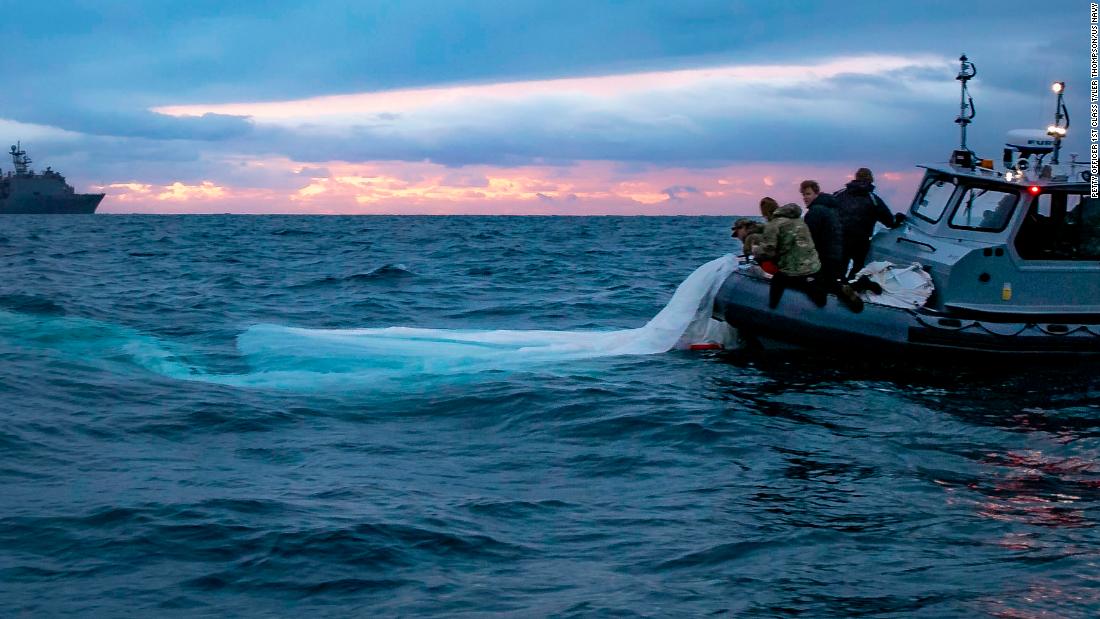

Almost a week after a suspected Chinese spy balloon was shot down off the coast of South Carolina, we’ve begun to learn more details regarding the Defense Department’s thinking and plans to deal with the balloon.
Two public Senate hearings regarding China and the balloon helped solidify the timeline of events and why officials made the decisions they did.
Those hearings, combined with classified briefings to the House and Senate from Pentagon, State Department and intelligence officials, left some lawmakers with more clarity — while others demanded more information about what exactly had happened.
If you are just reading in, here are key things to know:
What we learned on Thursday: Melissa Dalton, assistant secretary of defense for Homeland Defense and Hemispheric Affairs, told lawmakers the balloon entered the US Air Defense Identification Zone over Alaska on January 28 before flying over Canada. It reentered continental US airspace three days later.
President Joe Biden was briefed on the balloon the same day, and the Defense Department was “able to protect against PRC intelligence collection … since we knew where the balloon was.”
When the balloon was first spotted, it was not determined to have “hostile intent,” Lt. Gen. Douglas Sims, director of operations for the Joint Chiefs of Staff, told the Senate Subcommittee on Appropriations of Defense.
The official said there were no serious concerns about the balloon as it was over Alaska, because officials found that it would not impact aviation routes or present a significant intelligence gathering risk. When pushed on the military sites in Alaska, Sims said: “It was not near those locations and as we reconstruct the path, we are not concerned with intelligence gathering in Alaska.”
When the balloon continued on a path toward the lower United States, that assessment changed, Sims said. As a result, Biden asked the military for “kinetic courses of action.”
Ultimately, the military determined the risk of Chinese intelligence collection “was deemed to be low to moderate,” while the risk to people on the ground was “moderate to significant.”
The military recommended shooting the balloon down over the water, which had three benefits, Dalton said: It allowed officials more time to observe the balloon and China’s capabilities, more time to determine ways to reduce the risk to civilians when it was shot down, and a better chance at recovering the balloon afterwards.
Biden was again briefed on the balloon on Feb. 3 regarding the military’s plan to shoot the balloon down. It was approved and Biden was provided “regular updates,” Dalton said.
Deputy Secretary of State Wendy Sherman told the Senate Foreign Relations Committee that the Biden administration “learned a thing or two” from the intelligence gathered on China’s balloon. “We made clear to PRC (People’s Republic of China) officials that the presence of this surveillance balloon was unacceptable, and along the way we learned a thing or two which you’ll hear in the classified briefing about the PRC’s use of the balloon,” she said.
It was discussed during the classified House briefing that the balloon could have been dispatched by the Chinese government without the knowledge of Chinese President Xi Jinping, sources familiar told CNN’s Manu Raju. Officials also said during the briefing that part of the concern with shooting the balloon down earlier was a fear that it would escalate military tensions with China.
Where things stand now: The FBI began investigating debris of the Chinese spy balloon after it arrived at their lab at Quantico, Virginia, on Monday.
- The investigation marks the first time the FBI has investigated a spy balloon of this nature, senior FBI officials told CNN.
- The only evidence they have received thus far is what was on the surface of the water, which was the “canopy itself, the wiring and then a very small amount of electronics,” the official said. They have not yet started to investigate the balloon’s payload, which officials have previously said weighed more than a couple of thousand pounds.
- So far in the investigation, the FBI has not yet found any explosive material, the FBI official said on Thursday.
The FBI released photos on Thursday of agents processing the balloon debris.
What lawmakers are saying about the incident: Some lawmakers have been critical of the Biden administration’s response time and are asking for more transparency. Others have defended the administration’s decisions.
“They should have never let it into our sovereignty, they should have taken it another time,” House Speaker Kevin McCarthy said after the briefing. Rep. Adam Schiff, former chair of the House Intelligence Committee, told CNN after the briefing he’s “confident that the administration made the right judgement about when they shot it down.”
